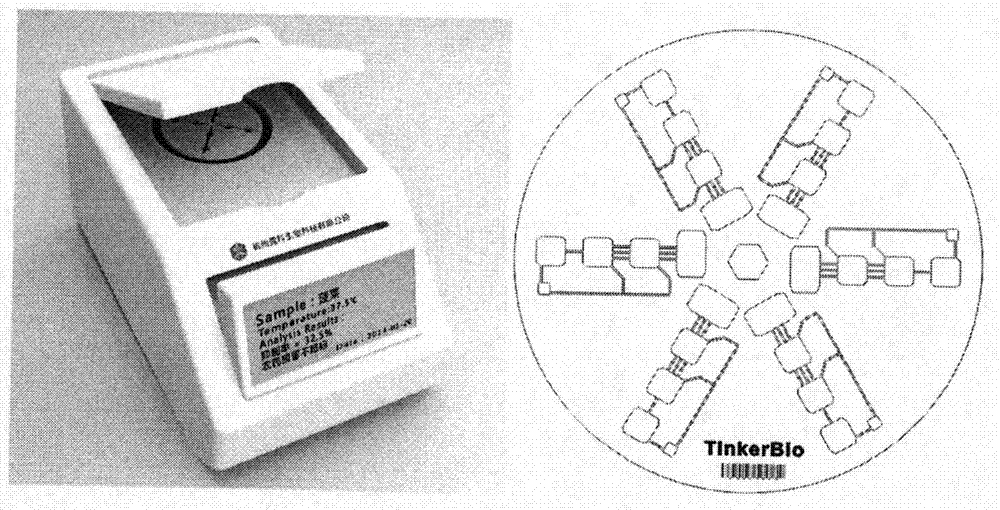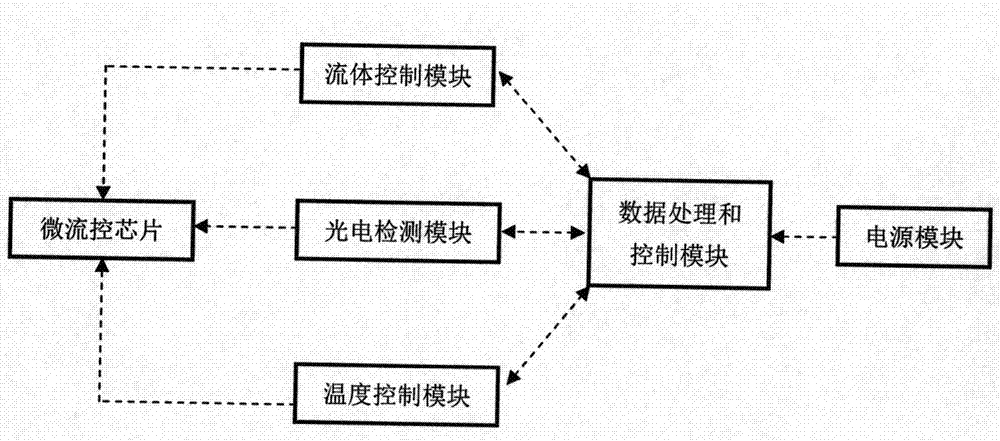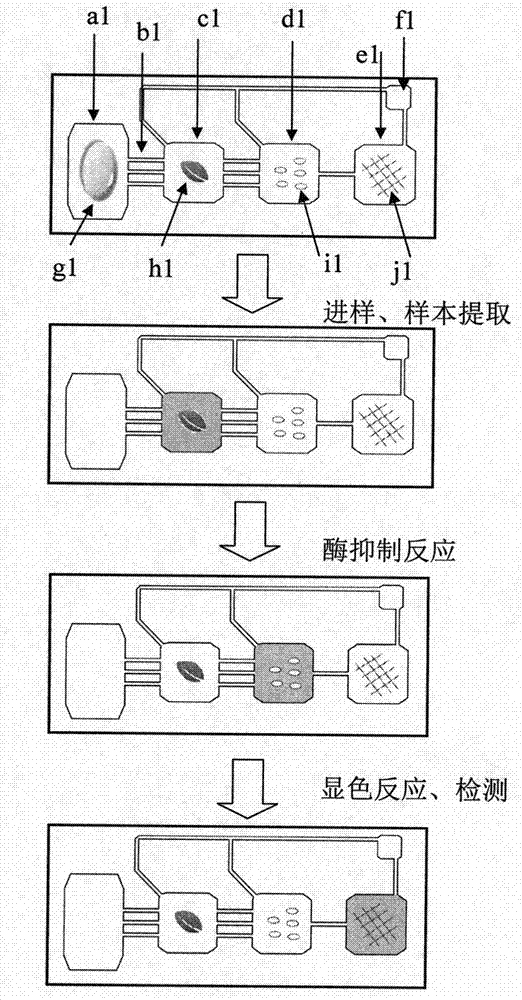Full-automatic and high-throughput micro-fluidic chip system and method for detecting pesticide residue
A pesticide residue detection and microfluidic chip technology, applied in analytical materials, instruments, etc., can solve the problems of poor reaction uniformity, time-consuming, and difficulty in on-site rapid detection, and achieve the effect of reducing detection costs.
- Summary
- Abstract
- Description
- Claims
- Application Information
AI Technical Summary
Problems solved by technology
Method used
Image
Examples
Embodiment 1
[0027] In this example, the microfluidic chip system for on-site rapid detection of pesticide residues includes a microfluidic chip and a portable instrument ( figure 1), where the structure and operation process of the microfluidic chip are as follows image 3 As shown, the microfluidic chip is composed of an extraction liquid pool a1, a fluid channel b1, a sample pool c1, an enzyme inhibition reaction pool d1, a color reaction and detection pool e1, and a vent hole f1. g1 is a liquid capsule stored in the extraction pool , h1 is the sample to be tested (such as vegetable leaves, fruit peel or pulp, etc.) placed in the sample pool, i1 is the enzyme and chromogen mixture stored in the reaction pool, and j1 is the substrate stored in the detection pool. The specific detection process is as follows: ①Sampling: put the quantitative sample h1 (such as fruits and vegetables) into the chip sample pool, close the sealing cover of the sample chamber, release the extraction liquid g1 s...
PUM
 Login to View More
Login to View More Abstract
Description
Claims
Application Information
 Login to View More
Login to View More - R&D
- Intellectual Property
- Life Sciences
- Materials
- Tech Scout
- Unparalleled Data Quality
- Higher Quality Content
- 60% Fewer Hallucinations
Browse by: Latest US Patents, China's latest patents, Technical Efficacy Thesaurus, Application Domain, Technology Topic, Popular Technical Reports.
© 2025 PatSnap. All rights reserved.Legal|Privacy policy|Modern Slavery Act Transparency Statement|Sitemap|About US| Contact US: help@patsnap.com



